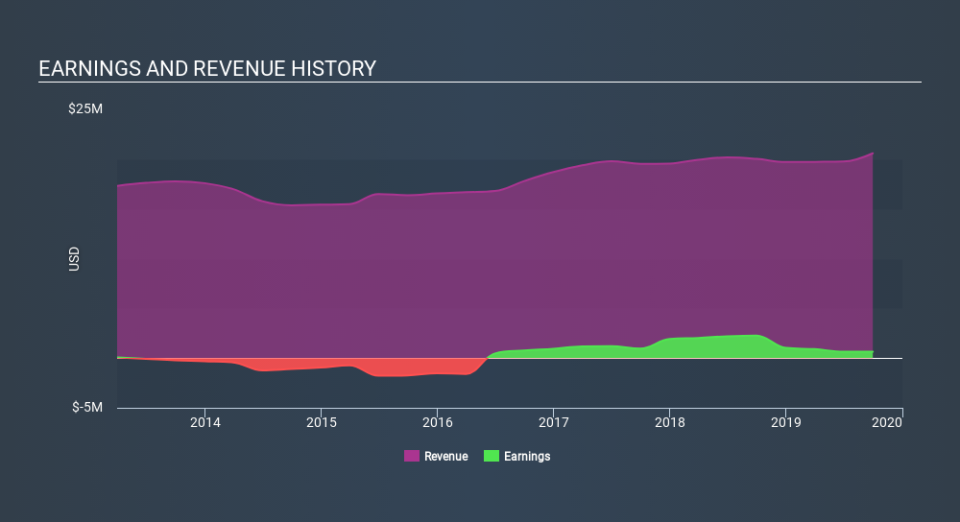Does American Shared Hospital Services (NYSEMKT:AMS) Have A High Beta?

Anyone researching American Shared Hospital Services (NYSEMKT:AMS) might want to consider the historical volatility of the share price. Modern finance theory considers volatility to be a measure of risk, and there are two main types of price volatility. The first category is company specific volatility. This can be dealt with by limiting your exposure to any particular stock. The other type, which cannot be diversified away, is the volatility of the entire market. Every stock in the market is exposed to this volatility, which is linked to the fact that stocks prices are correlated in an efficient market.
Some stocks are more sensitive to general market forces than others. Some investors use beta as a measure of how much a certain stock is impacted by market risk (volatility). While we should keep in mind that Warren Buffett has cautioned that 'Volatility is far from synonymous with risk', beta is still a useful factor to consider. To make good use of it you must first know that the beta of the overall market is one. Any stock with a beta of greater than one is considered more volatile than the market, while those with a beta below one are either less volatile or poorly correlated with the market.
See our latest analysis for American Shared Hospital Services
What we can learn from AMS's beta value
Looking at the last five years, American Shared Hospital Services has a beta of 0.86. The fact that this is well below 1 indicates that its share price movements haven't historically been very sensitive to overall market volatility. If history is a good guide, owning the stock should help ensure that your portfolio is not overly sensitive to market volatility. Beta is worth considering, but it's also important to consider whether American Shared Hospital Services is growing earnings and revenue. You can take a look for yourself, below.
Does AMS's size influence the expected beta?
American Shared Hospital Services is a rather small company. It has a market capitalisation of US$14m, which means it is probably under the radar of most investors. Very small companies often have a low beta value because their share prices are not well correlated with market volatility. This could be because the price is reacting to company specific events. Alternatively, the shares may not be actively traded.
What this means for you:
One potential advantage of owning low beta stocks like American Shared Hospital Services is that your overall portfolio won't be too sensitive to overall market movements. However, this can be a blessing or a curse, depending on what's happening in the broader market. In order to fully understand whether AMS is a good investment for you, we also need to consider important company-specific fundamentals such as American Shared Hospital Services’s financial health and performance track record. I urge you to continue your research by taking a look at the following:
Financial Health: Are AMS’s operations financially sustainable? Balance sheets can be hard to analyze, which is why we’ve done it for you. Check out our financial health checks here.
Past Track Record: Has AMS been consistently performing well irrespective of the ups and downs in the market? Go into more detail in the past performance analysis and take a look at the free visual representations of AMS's historicals for more clarity.
Other High-Performing Stocks: Are there other stocks that provide better prospects with proven track records? Explore our free list of these great stocks here.
If you spot an error that warrants correction, please contact the editor at editorial-team@simplywallst.com. This article by Simply Wall St is general in nature. It does not constitute a recommendation to buy or sell any stock, and does not take account of your objectives, or your financial situation. Simply Wall St has no position in the stocks mentioned.
We aim to bring you long-term focused research analysis driven by fundamental data. Note that our analysis may not factor in the latest price-sensitive company announcements or qualitative material. Thank you for reading.

